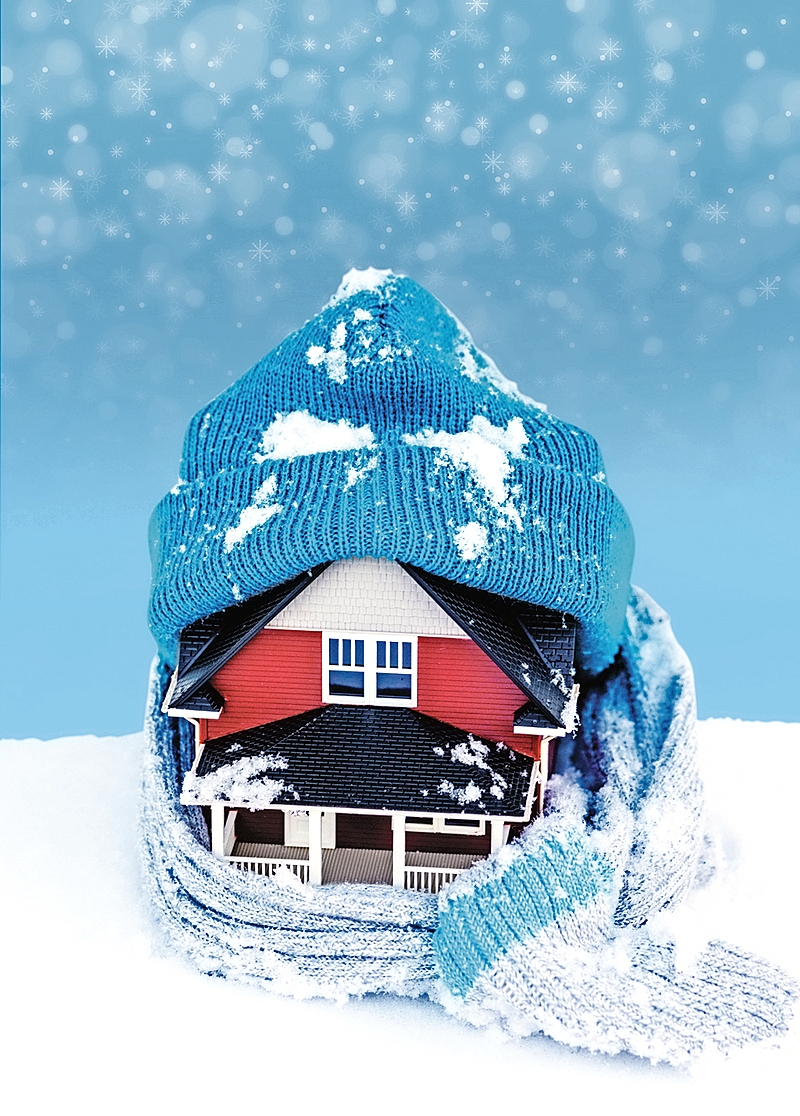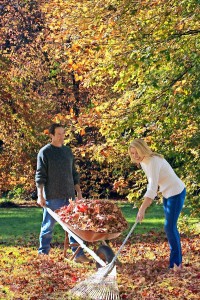Winter-Wise—5 Ways To Prepare Your Outdoor Space for Winter
By Julie Duffin
October 2015 View more Featured

As the leaves start to change color and temperatures begin to cool, it’s time to start preparing your out-door space for the winter weather ahead. A little bit of work over the next couple of months can help you attain a beautiful outdoor oasis once the warmer weather returns. While opinions vary, here are five projects most experts recommend tackling during the fall months.
Think About The Projects You Want Completed Next Year
If you’re planning on having an outdoor kitchen, fireplace, or patio installed prior to hosting a graduation or summer party, now is the time to start contacting landscapers. “I highly encourage people to think about next year’s projects in the fall,” says Eric Bruss, president of Bruss Landscaping. “If you wait until spring, chances are, reputable landscaping companies will already be booked,” said Bruss. If possible, Bruss recommends getting your project done in the fall. “That way everything is established by the summer and you are not scrambling to get it accomplished at the last minute.” Barry Conlin, president of C.B. Conlin Landscapes agrees. “Spring is a very busy time and the weather can be unpredictable. By scheduling a fall installation, customers avoid the spring rush and potential weather delays,” said Conlin. There is still plenty of time to complete your outdoor project this fall Conlin assures. “If the project is professionally installed before winter, there should be absolutely no issues with settling.”
Both Bruss and Conlin also recommend planting new trees and shrubs in the fall. “Fall is the best time to plant trees and shrubs,” said Conlin. “Because they are dormant, their roots are not bothered by being moved and replanted.”
Before the dark winter months set in, it’s also a good time to consider installing some outdoor lighting. Not only can outdoor lighting accent your home, but it also provides added security.
Once you’ve taken care of next year’s goals, you can focus on preparing your existing outdoor features for winter.
Winterize Your Lawn
 Proper lawn care and winterization is the key to having lush, green grass in the spring. “The optimal time to fertilize your lawn for winter is between October 15 and November 15,” said Bruss. If you spread fertilizer yourself, make sure the nitrogen, phosphorus and potassium numbers listed on the bag are as similar as possible. “You want a product with balanced nutrients to facilitate strong root growth,” he explains.
Proper lawn care and winterization is the key to having lush, green grass in the spring. “The optimal time to fertilize your lawn for winter is between October 15 and November 15,” said Bruss. If you spread fertilizer yourself, make sure the nitrogen, phosphorus and potassium numbers listed on the bag are as similar as possible. “You want a product with balanced nutrients to facilitate strong root growth,” he explains.
Fall is also your lawn’s peak growing season and the best time to restore it from summer stress. New grass and seed thrive in the cool fall temperatures, taking root and adding top growth quickly.
Continue mowing your lawn until it stops growing in late fall, leaving your grass two inches tall at the last cutting. Grass longer than two inches can flatten in the winter and retain moisture leading to mold and root damage. Grass shorter than two inches can be damaged by the winter winds and sun.
Bruss also points out the importance of eliminating leaves and debris from your yard. “Disease, fungal and insect pathogens can exist on dead leaf material so it’s important to remove all leaves from your yard.” To make sure your landscape won’t be re-infected next year, Bruss recommends both raking your yard and then using a leaf blower to ensure it is completely clear.
Care for Trees and Other Plants
 It is also important to prune or remove branches that are hanging over your house and fence line to avoid potential storm damage. Pruning also reduces the amount of leaves and debris that can clog gutters. Bruss notes that heavier corrective pruning should occur while trees are dormant between November 15 and March 15. Dormant pruning allows tree trimmers to clearly see the canopy and remove the branches with less debris.
It is also important to prune or remove branches that are hanging over your house and fence line to avoid potential storm damage. Pruning also reduces the amount of leaves and debris that can clog gutters. Bruss notes that heavier corrective pruning should occur while trees are dormant between November 15 and March 15. Dormant pruning allows tree trimmers to clearly see the canopy and remove the branches with less debris.
Also, make sure your trees and shrubs get plenty of water in the fall before they go dormant. Conlin recommends watering your plants well before the ground freezes, especially new ones. “It’s important to give evergreens, in particular, a good soaking before the ground freezes,” Conlin states. “Evergreens will soak up the water and store it in their needles. If they don’t store enough for the winter they will turn brown by springtime.”
It’s a personal preference whether you cut down perennials or leave them throughout the winter. “Some people prefer to cut them down to make the yard look neat. Others leave them to act as nature’s mulch and insulate the root system,” said Conlin. Bruss agrees, “Some people prefer to have winter texture, while others prefer to cut down the perennials.”
Seal Your Deck
After a summer full of parties, your deck probably needs a little TLC before winter. Ground-in dirt, sun and moisture can take their toll on wood. Before winter, it’s recommended that you thoroughly clean your deck and remove any deteriorating finish. Then apply a water repellent sealant to protect it from splitting and cracking during the winter months. The best time to seal your deck is within the October to early November time frame.
Seal Your Driveway
 Whether it’s made of concrete, asphalt or pavers, your driveway is highly susceptible to the harsh winter weather. Much like a wood deck, winter’s freeze-thaw cycle can enlarge cracks and further damage your driveway. It’s important to fix cracks in a timely manner to protect the durability, appearance and safety of your driveway. If you are not hiring a professional, repairing your driveway before winter can be a simple task.
Whether it’s made of concrete, asphalt or pavers, your driveway is highly susceptible to the harsh winter weather. Much like a wood deck, winter’s freeze-thaw cycle can enlarge cracks and further damage your driveway. It’s important to fix cracks in a timely manner to protect the durability, appearance and safety of your driveway. If you are not hiring a professional, repairing your driveway before winter can be a simple task.
Inspect your driveway for cracks, holes and crumbling areas. Thoroughly clean the damaged area by removing loose rocks and vegetation to ensure proper bonding between the old surface and the repair material. Concrete cracks can be filled with concrete caulking or concrete sealer depending on the size of the crack. Small asphalt cracks can be filled with a rubberized asphalt-emulsion crack filler. Use a cold patch asphalt repair compound for deeper cracks and holes. Once dry, evenly apply a top coat sealer.


